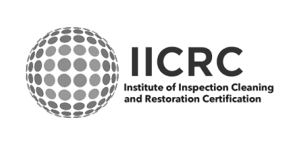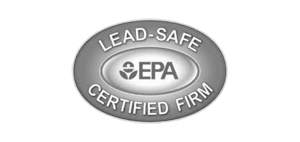Water damage in your home can be a serious matter, raising concerns about personal safety and property damage. If you are dealing with water damage, you may be wondering whether it is safe to sleep inside your house. This is a valid question that deserves careful consideration, as there are real risks associated with sleeping in a water-damaged house.
In this section, we will examine the safety concerns related to sleeping in a house with water damage and discuss ways to protect yourself and your home. By taking the appropriate safety measures, you can minimize the risks associated with water damage and ensure a safe living environment for you and your family.
Key Takeaways:
- Water damage in your home can pose risks to personal safety and property.
- Sleeping in a house with water damage can put you at risk of health hazards and structural damage.
- It is important to assess the extent and severity of water damage and implement safety measures to protect yourself and your home.
- Professional remediation and restoration services can help prevent further damage and restore your home to a safe living condition.
- Preventing future water damage is crucial to maintaining a safe home environment.
Understanding the Risks of Sleeping in a House with Water Damage
When faced with water damage in your home, it’s crucial to understand the risks that come with sleeping in a house that has been affected. Water damage can lead to serious health hazards, such as mold growth, exposure to harmful chemicals, and respiratory issues. Structural damage is also a concern, as water can weaken the foundations and integrity of your home.
One of the most significant health hazards posed by water damage is mold growth. Mold thrives in moist environments and can lead to various respiratory issues, including asthma, allergies, and infections. Prolonged exposure to mold can be detrimental to your health, so it’s essential to take precautions when dealing with water damage.
The structural damage that water can cause to your home can be severe. Over time, water can weaken the foundation, floors, and walls, compromising the structural integrity of your home. This can result in severe damage, potentially leading to costly repairs and, in extreme cases, even the collapse of your home.
It is critical to address water damage immediately to minimize the risks of sleeping in a water-damaged house. Implementing safety measures such as drying out the affected areas, improving ventilation, using air purifiers, and temporarily relocating if necessary can help reduce potential hazards.
Assessing the Extent and Severity of Water Damage
Before making any decisions about sleeping inside a water-damaged house, it’s essential to assess the extent and severity of the damage. Some signs of water damage that you should look out for include:
- Water stains on walls, ceilings, and floors
- Musty odors that persist even after cleaning
- Warped or buckled walls, baseboards, or floors
- Ceiling sagging or drooping
- Visible mold growth
If you notice these signs, it’s crucial to conduct a professional inspection to determine the severity of the damage. A professional inspector can identify hidden damage that may not be visible to an untrained eye. They can also provide a detailed report on the scope of the damage, which can be useful in deciding what remediation steps to take.
Assessing the extent and severity of water damage is critical in determining the appropriate safety measures and restoration efforts needed to make the house habitable again.
Implementing Safety Measures in a House with Water Damage
If you choose to sleep in a house with water damage, it’s crucial to prioritize your safety. Here are some safety measures you can implement:
- Dry out the affected areas: Water-damaged areas should be dried out as soon as possible. Use fans, dehumidifiers, and open windows to improve air circulation.
- Improve ventilation: Proper ventilation is essential to prevent mold growth and improve air quality. Open windows and doors when possible, and use exhaust fans in areas like the bathroom and kitchen.
- Use air purifiers: Air purifiers can help remove harmful particles like mold spores and bacteria from the air. Consider using a HEPA filter-equipped air purifier to clean the air in your home.
- Temporarily relocate if necessary: If the water damage is extensive, you may need to temporarily relocate until the damage is repaired. This will ensure your safety and minimize health risks.
By taking these safety measures, you can minimize the risks of sleeping in a water-damaged house. Always prioritize your personal safety, and don’t hesitate to seek professional help if needed.
Remediation and Restoration Options for Water Damage
When dealing with water damage, it’s important to hire a professional restoration service to address the problem. A team of experts can help you identify and address the root cause of the issue, dry out the affected areas, and prevent further damage from occurring.
There are several options for water damage remediation, including:
- Structural Drying: This process involves the use of specialized equipment to dry out the affected areas and prevent further water damage.
- Mold Remediation: This service focuses on identifying and removing mold growth that may have developed as a result of the water damage. It’s crucial to address mold growth promptly to prevent further health hazards.
- Content Restoration: If any personal belongings are affected by water damage, a professional restoration service can often restore them to their pre-damaged condition.
Preventing future water damage is also important. Following safety measures can help prevent further damage:
- Fixing leaks and addressing water damage promptly
- Improving ventilation in the affected areas
- Using air purifiers to reduce the harmful particles in the air
Overall, it’s important to prioritize safety and take immediate action when dealing with water damage. Hiring a professional restoration service can help prevent further damage and provide peace of mind.
Conclusion
Now that you have a better understanding of the risks associated with sleeping in a house with water damage, it’s important to prioritize safety considerations. Your health and wellbeing should be the top priority, and in some cases, temporary relocation may be necessary until the damage is remediated.
Prevention and restoration are crucial to ensuring a safe living environment. By taking proactive measures, such as addressing leaks and implementing proper ventilation, you can prevent water damage and minimize the risks to your health and property.
If you do experience water damage, it’s essential to assess the extent and severity of the damage and hire professional restoration services to address the issue promptly. Remember, the longer you wait, the greater the risks to your health and the structural integrity of the house.
By following these safety considerations and prioritizing prevention and restoration, you can minimize the risks of water damage and ensure a safe living environment for you and your loved ones.
FAQ
Is it safe to sleep inside a house with water damage?
It is not advisable to sleep in a house with water damage without taking proper safety measures. Water damage can pose various risks to both health and property.
What are the risks of sleeping in a house with water damage?
Sleeping in a house with water damage can expose you to health hazards such as mold growth, harmful chemicals, and respiratory issues. It can also cause structural damage to the integrity of the house.
How can I assess the extent and severity of water damage?
Signs of water damage include water stains, musty odors, and warped materials. It is essential to conduct a professional inspection to determine the severity and extent of the damage.
What safety measures should I implement in a house with water damage?
To minimize the risks, you should dry out the affected areas, improve ventilation, use air purifiers, and consider temporary relocation if necessary. Prioritizing personal safety is crucial.
What are the remediation and restoration options for water damage?
Hiring professional restoration services is recommended to address the root cause of the issue, dry out the affected areas, and prevent further damage. It is also essential to take preventive measures to avoid future water damage.
What are the key considerations regarding safety, water damage risks, and prevention and restoration?
Before deciding to sleep in a house with water damage, it is important to consider safety factors. Understanding the risks involved helps in making informed decisions. Prevention and prompt restoration are crucial to maintain a safe living environment.









